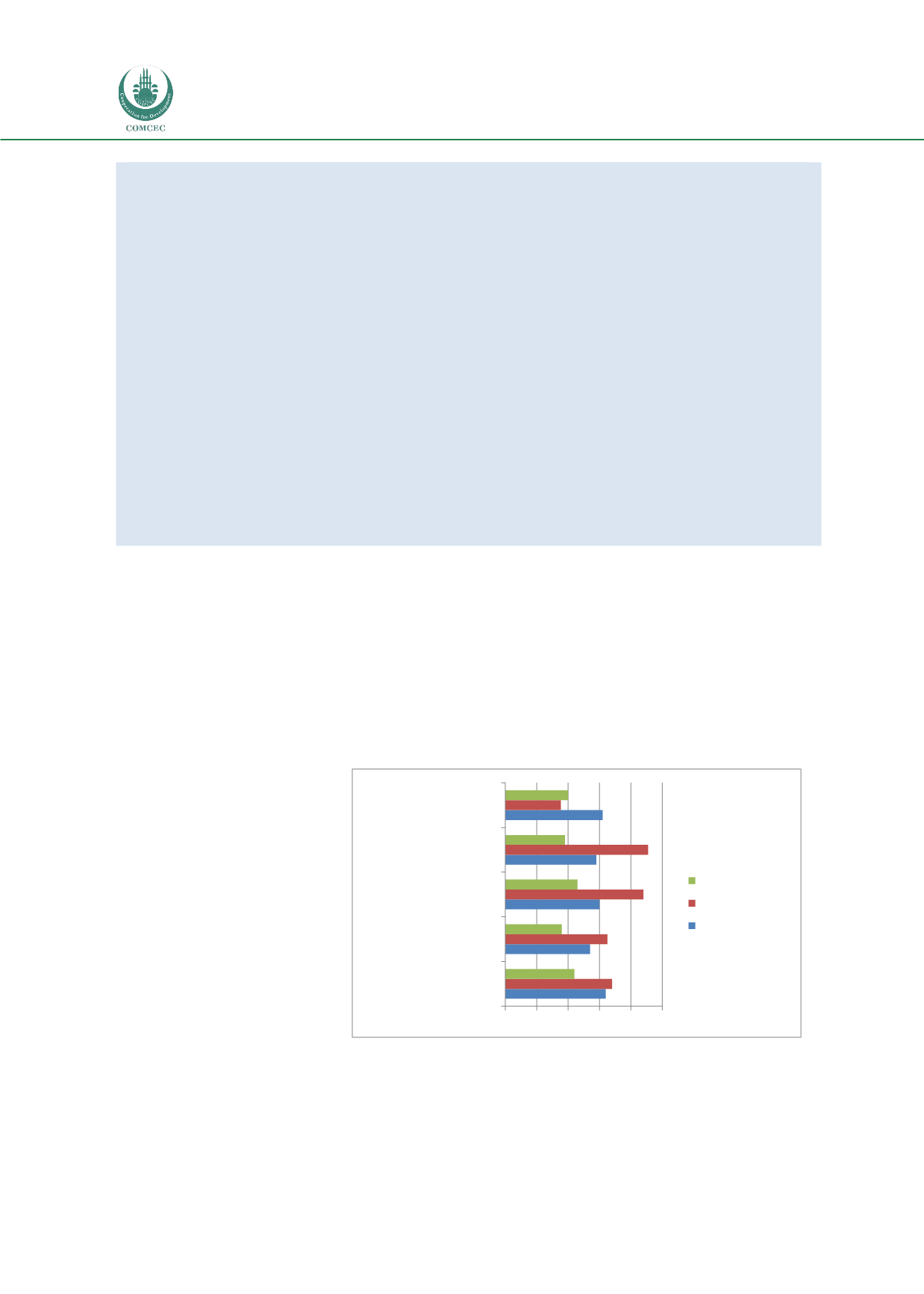

Facilitating Smallholder Farmers’ Market Access
In the OIC Member Countries
50
BOX 1: POTATOES, FAST FOOD, AND SMALLHOLDERS IN UGANDA
The Nyabyumba Farmer Group (NFG) in Kabale District recently established an on-going agreement with
Nandos, a fast-food restaurant chain located 450 kilometers away in Kampala, to supply potatoes. Kabale
District is well suited to potato production because its high elevation and cool climate limit potato diseases.
Until 2004, NFG had done well producing seed potatoes for other farmers. Seeking new markets, the group
received help from an agro-enterprise team from the International Center for Tropical Agriculture and local
non-governmental organizations. NFG worked with market intermediaries to examine four marketing
channels: local markets, Kampala wholesale markets, small shops in Kampala, and restaurants and
supermarkets in Kampala. Eventually NFG identified Nandos, a fast-food restaurant that was purchasing 10
metric tons of fresh potatoes every month.
An agreement was reached for NFG to provide 50 one-hundred-kilogram bags of potatoes to Nandos every
two weeks throughout the year. The potatoes were to be of a single variety, oval, weigh about 80 grams each,
have few eyes, and be washed. A price was fixed, but no formal contract was signed.
The marketing effort succeeded partly because of farmers’ capacity, built through past marketing exercises
and production support. Farmers had also received agricultural and other advice from Africare and potato
marketing expertise from Uganda’s National Agricultural Research Organization and PRAPACE, a local agency
with links to the International Potato Center.
Source:
Authors, based on Kaganzi et al. 2009.
Governance and institutions
The institutions needed to govern and support markets are difficult to build and expensive
to maintain, yet they are fundamental to economic growth. Compared to its peers, Uganda
scores well on most Worldwide Governance Indicators (which are based on data reflecting
local perceptions of governance, gathered through surveys and other assessments by
survey institutes, think
tanks, NGOs, international
organizations, and private
firms).
Figure 27 compares
percentile rankings for
perceptions of governance
in Uganda compared to the
averages in SSA and low-
income
countries.
The
figure reveals that the rule
of law—the workings of
courts, police, and other
institutions
to
protect
people and property—is
perceived to be high in
Uganda
relative
to
perceptions in other low-
income
countries.
The
same is true for perceptions of regulatory quality (the set of activities needed to support
private enterprise) and the government’s provision of public services. In contrast, the
perception of fiduciary stewardship in Uganda is lower than the average for peer
FIGURE 27: GOVERNANCE INDICATORS FOR UGANDA, SUB-
SAHARAN AFRICA, AND LOW-INCOME COUNTRIES, 2012
Source:
Worldwide Governance Indicators (World Bank 2014i).
0 10 20 30 40 50
Voice and Accountability
Government Effectiveness
Regulatory quality
Rule of law
Fiduciary stewardship
Low income
Uganda
Sub-Saharn Africa

















